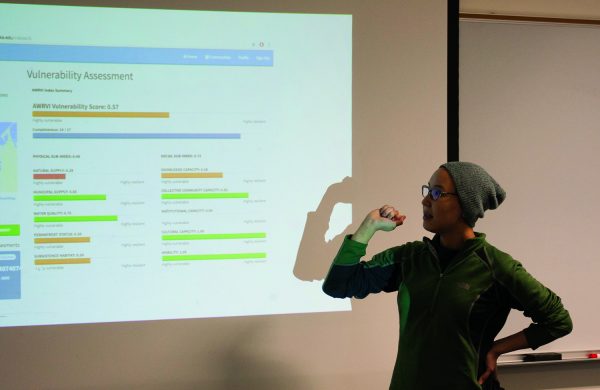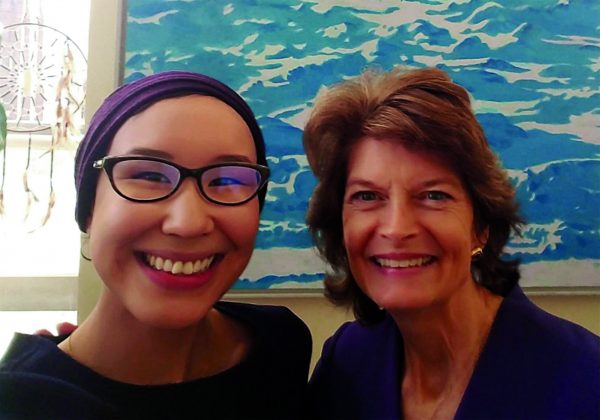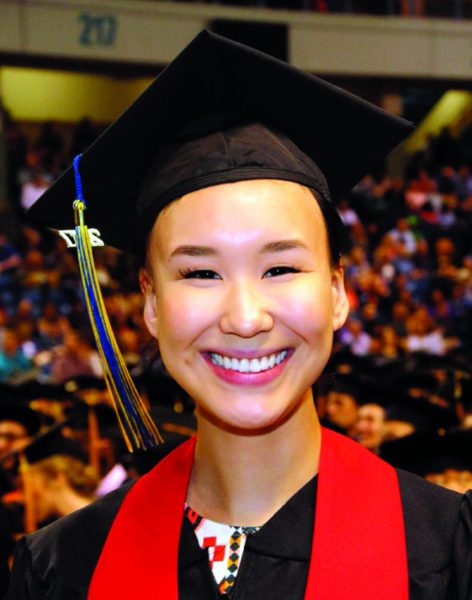UAF alumna Glenn looks to hometown for water data project
January 17, 2018
Tom Moran
907-474-5581

Download text and photo captions here.
For Roberta Glenn, the North Slope isn’t just a big space on a map: it’s her home. So when the Iñupiat native of Utqiagvik and then-University of Alaska Fairbanks undergrad was tasked in 2016 with analyzing the water supplies of the Alaska community of her choice, she turned her attention northward.
“I chose Utqiagvik,” she said. “That was my idea because it was my hometown. Also, I figured that was the community with the most data, and one where I could answer some questions because I know some of the indicators already.”
Glenn is one of a recent group of undergraduate interns at the Geographic Information Network of Alaska, an organization that provides geospatial data support to the University of Alaska and to the state. One of her major tasks for GINA was to work on Arctic Water Resources Vulnerability Indexes, which are online products designed to quantify the vulnerability of a community’s water supply. Filling out an index for Utqiagvik, which was formerly known as Barrow, required Glenn to acquire data on 24 indicators. They ranged from precipitation levels and wastewater treatment methods to education and subsistence-use statistics. Her work was supported by the Alaska National Science Foundation Established Program to Stimulate Competitive Research (NSF EPSCoR), which helped fund her internship.

“It includes these social and physical factors,” she said. “I always like looking for the social side of things, the anthropology side of things, and I like that it pulls together two fields of science.”
Meanwhile, Glenn’s internship was taking her far: In 2016 she traveled to Washington, D.C., as the only student in a group that presented UAF research to Alaska’s congressional delegation, as well as to Alaska Gov. Bill Walker. She graduated from UAF in spring 2017 with a degree in geography and a minor in geographic information systems, but contracted with Alaska NSF EPSCoR to continue work on the organization’s study of Alaska community adaptation to environmental change. She created a how-to guide for the water vulnerability indexes and contributed ideas about ways to make them more accurate and user-friendly.
“Because I had completed one by myself for Utqiagvik, but also, because I'm from a small Arctic community, I was able to speak to some of the low-scoring indicators and point out that maybe this low score isn't representative of what it's really like,” she noted in fall 2017. “And, because of my familiarity both with the index and with Arctic communities, I have something to bring to the table in trying to improve the usability of the index.”

Glenn just began a new job mapping shorelines in Western Alaska for the state’s Coastal Hazards Program. She said she has a long-term goal of obtaining a master’s degree in communications so she can learn how to share science at a local level, spurred on by the amount of research she saw taking place in North Slope communities — a phenomenon she discovered through her internship.
“I have seen a lot of different science that is happening or going on regarding these communities, related to these communities, and it’s something that I wasn’t aware of,” she said. “It made me want to be more involved in the science that’s going on, especially around the North Slope, because that’s my home, and also to be more involved in communicating it.”


